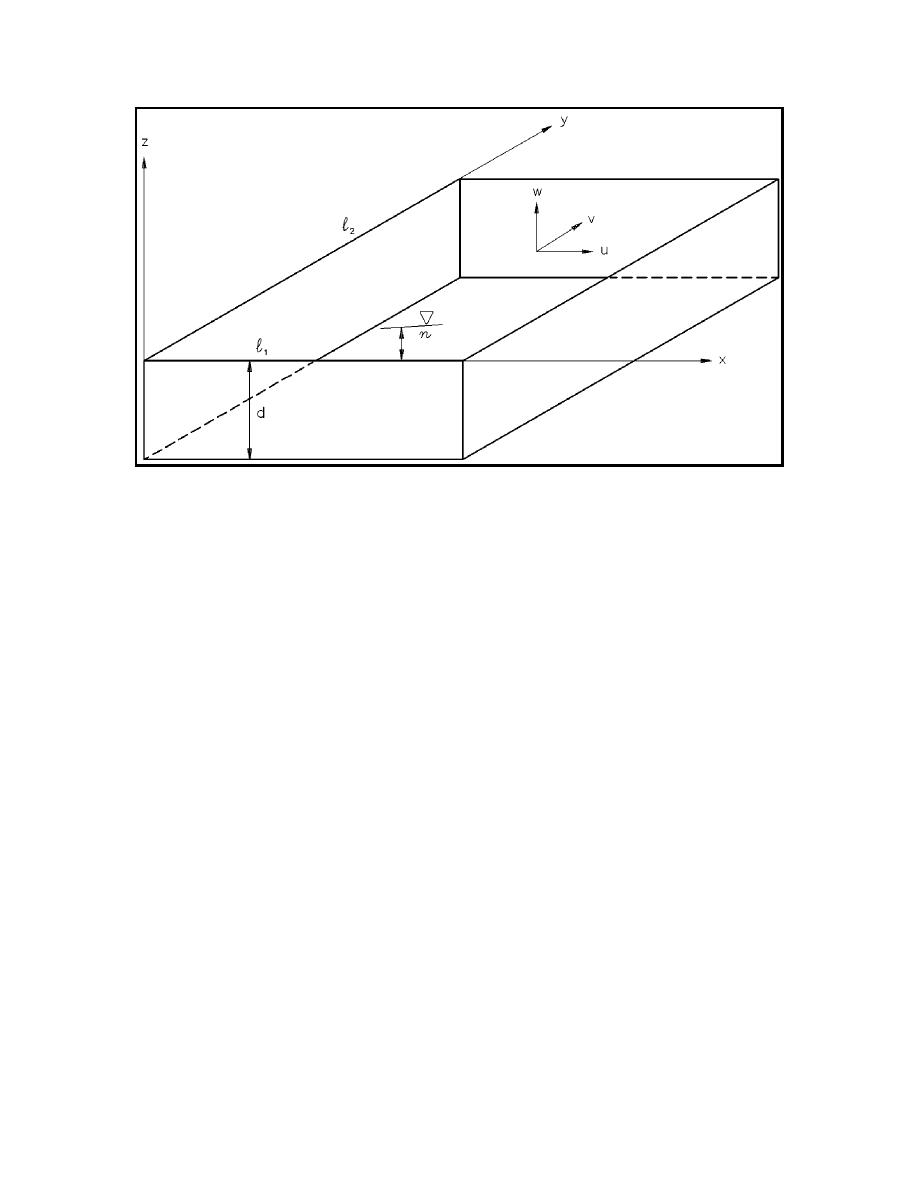
EM 1110-2-1100 (Part II)
30 Apr 02
Figure II-7-28. Behavior of an oscillating system with one degree of freedom
(6) Forced oscillations of closed basins can be a concern when the basin is large enough to be affected
by moving pressure gradients or strong surface winds, which is generally not true for harbors. Winds can be
especially important in large shallow basins, such as Lake Erie. The subject of forced oscillations of closed
basins is discussed by Raichlen and Lee (1992).
d. Open basins - general.
(1) Open basins, typically harbors or bays, are most susceptible to oscillations forced across the open
boundary. Typical forcing mechanisms include infragravity waves, eddies generated by currents moving past
a harbor entrance, and tsunamis (Sorensen 1986). Local seismic activity can also generate oscillations within
the basin. Meteorological forces (changes in atmospheric pressure and wind) can initiate oscillations in large
bays, but they are not usually a concern over areas the size of a harbor.
(2) The period of a true forced oscillation is the same as the period of the exciting force. However,
forced oscillations are usually generated by intermittent external forces, and the period of oscillation is greatly
influenced by the basin dimensions and mode of oscillation.
e. Open basins - simple shapes.
(1) In many cases, the geometry of a harbor can be approximated by an idealized, simple shape such as
a rectangle or circle. Then the approximate response characteristics can often be determined from guidance
based on analytic solutions. Simple harbors are also very helpful for developing an understanding of the
general behavior of an open basin.
(2) As with closed basins, the simplest, classical case is a narrow, rectangular basin with uniform depth.
The basin has vertical walls on three sides and is fully open at one end. The fundamental mode of resonant
oscillation occurs when there is one-quarter of a wave in the basin (Figure II-7-26). The general expression
for the free oscillation period in this case is
II-7-36
Harbor Hydrodynamics


 Previous Page
Previous Page
